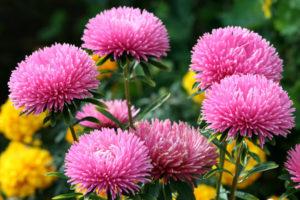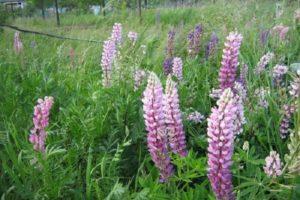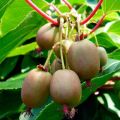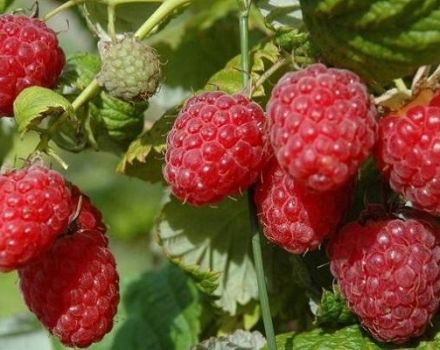Planting and caring for perennial morning glory, varieties and rules for growing in the open field
Ipomoea annual (perennial) is used to decorate summer cottages. Planting and caring for this plant does not require much attention. Morning glory dies in winter. It is advisable to grow this beautiful flowering crop in seedlings. Having sown seeds in April-March, in the middle of summer you can admire the lush flowering carpet.
Description
Perennial morning glory (from Latin ipomoea) is a climbing flower liana from the Bindweed family. Originally from South America and Africa. Grows in tropical and subtropical forests. Some varieties of morning glory are shrubs or small trees. There are more than 450 species.
The climbing plant is very popular with gardeners. After all, its fast-growing vines, strewn with bright fragrant flowers, create a long-awaited shade in the summer. Used to decorate the landscape, as an ampelous plant grown in hanging pots. Common people call it bindweed.
The name translated from Greek means - "like a worm". True, we are not talking about the stems, but about the structural features of the root system. Morning glory can be annual and perennial. The curly stem of this plant sometimes reaches 3-8 meters in length. Leaves are greenish, cordate, with a pointed tip, or openwork, strongly dissected.
The flower is funnel-shaped. The corolla consists of petals fused with each other. Its diameter reaches 5-20 centimeters. The buds open in the morning in sunny weather. On cloudy days and at night, they roll up. Flowers are simple or double. Flower petals can be white, pinkish, red, purple, yellowish, blue. The colors are monochromatic or variegated.
Flowers appear in June-July. Pollinated by insects or wind, after which black seeds appear in closed capsules. Morning glory can bloom before the onset of cold weather. This is not a frost-resistant culture, it does not tolerate cold, it quickly dies in winter.

Features:
In many regions of Russia with severe snowy winters, only one-year morning glory is grown. This climbing plant blooms well and profusely from July to the first autumn frosts.Ipomoea flowers bloom quickly in the morning, and wither in the evening. True, long-term lush flowering is achieved due to constantly renewing flowers. Flowering - remontant and continuous.
This is a completely unpretentious, but poisonous culture. Propagated by seeds. Ipomoea is sown in open soil only in May. For seedlings - at the end of April. From the moment of sowing to the appearance of flowers, it takes about 2-3 months. If the bindweed does not bloom for a long time, it means that it is not properly looked after. In this case, you need to reduce the amount of dressings.
Morning glory is too sensitive to direct sunlight. Prefers diffused lighting. In northern latitudes, it can only be grown in greenhouses.
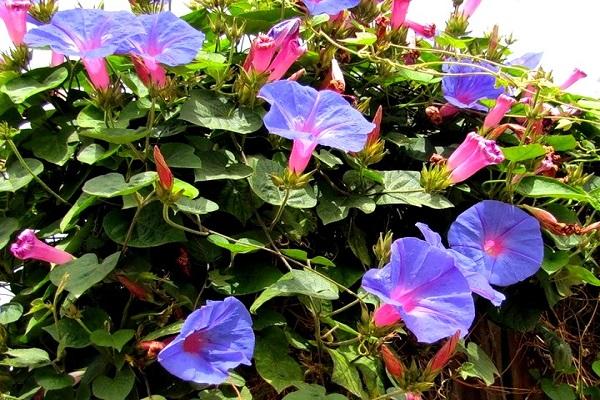
Types and varieties
In gardening, about 25 species of morning glory are grown. Usually, the following varieties are planted in summer cottages: Purple, Tricolor, Batat, Nile, Kvamoklit. Very rarely bred Ipomoea Cairo, Moonflower, Finger.
Purple
Curly annual. The name in Latin is Ipomoea purpurea. Popular among summer residents. Growing rapidly. It has many small flowers and lush green foliage. The stem can be up to three meters long. One inflorescence can have up to five flowers. Flowers - funnel-shaped, consisting of five fused petals, up to 4.9 centimeters in diameter. They have different colors: blue, pink, purple, red. Popular varieties: Tsyganochka, Blue Venice, Beauty of Moscow, Crimson Rambler.
Ivy
Annual crop with a slender, long, curly stem that reaches 2.5-3 meters. The leaves are simple, divided into 3-5 lobes, similar to ivy leaves. Flowers are funnel-shaped, growing on stems one by one or collected in inflorescences, consisting of 2-3 flowers. The diameter of the flower is 4.95 centimeters. The color of the petals is from blue to purple. The most famous variety is Roman Candy.
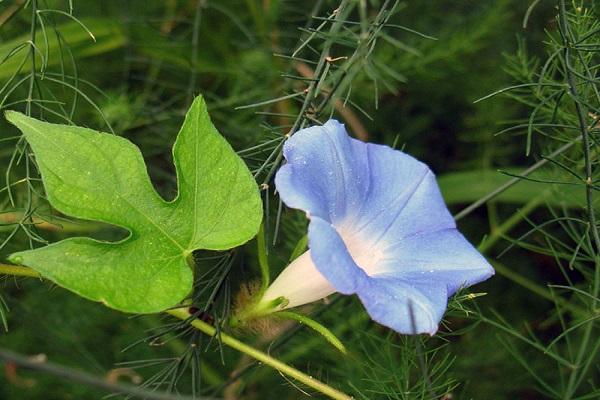
Nile
An annual, highly branching liana. It can reach a length of 2.5-3 meters. The flowers of this plant are large, they can be 9.5 centimeters in diameter. Painted in pink, blue, reddish, purple. Popular varieties: Pikoti, Serenade hybrid.
Kvamoklit
This is a very beautiful annual. It is also called a cypress liana. The stems entwining any support can grow up to 3-5 meters. The leaves are green, openwork, reminiscent of a fan. The flowers are like stars. They can be white, pink, reddish. Morning glory blooms from mid-summer to October.
Red
Fast growing culture. During flowering, it resembles a Christmas tree decorated with bright red flowers. The stem reaches 3-5 meters in length. It has openwork, feathery leaves, similar to a fern. The flowers look like red stars, each 2-4 centimeters in diameter.
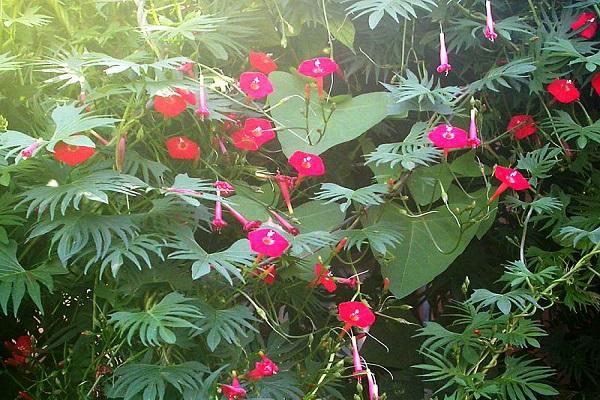
Admiral
Curly liana with reddish flowers in the form of stars on a green background of dense openwork foliage. Blooms from late July to late autumn.
Lobed
Curly annual. The stem grows up to 2.5-3 meters in length. The leaves are openwork. Inflorescences are spike-shaped, 19-25 centimeters long, consist of 8-12 flowers, similar to reddish, yellow, white drops.
Twinkling stars
Curly annual cypress liana. The stem can grow up to 2.5-3 meters. Leaves are feathery, openwork. Flowers look like multi-colored stars (scarlet, white, pink).
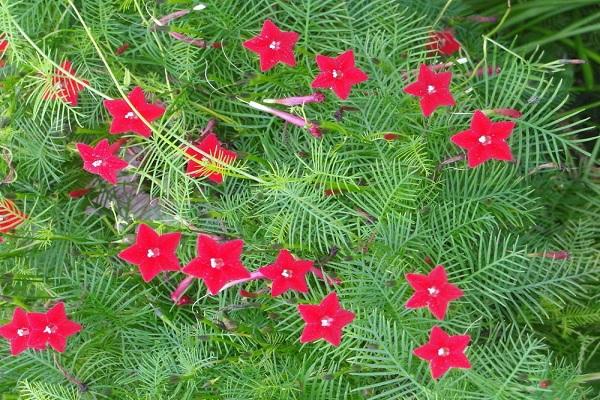
Slaughter
Liana growing up to 2-3 meters in length. It has an exotic form of dissected leaves, similar to palm. Flowers - small, red, 2.5 centimeters in diameter. Blossom early in the morning.
Pinnate
A fast growing cypress-like liana. The leaves are dissected like those of a fern. The flowers are scarlet, they resemble stars.
Sky blue
An annual plant belonging to the Tricolor species. It has large (up to 9.5 centimeters in diameter) flowers of sky-blue color. A climbing liana can reach 4.2-5 meters in height. The plant is densely covered with heart-shaped greenish leaves.Flowers are arranged in pairs or 3 pieces. They open at sunrise and close in the afternoon.
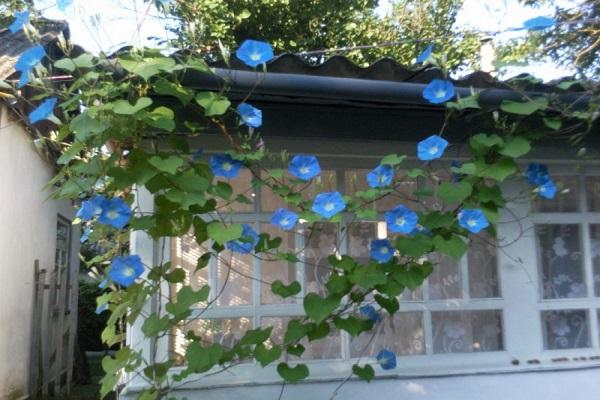
Moonflower
The stem grows up to 2.5-3 meters in length. The leaves are heart-shaped. White, fragrant flowers reach 9.5 centimeters in diameter. Flowering is exclusively nighttime. With the first rays of the sun, the snow-white flowers close. True, in cloudy weather, flowers can open in the afternoon, towards evening.
Cairo
The stem grows up to 4-5 meters in length. Has carved leaves. Flowers - soft lilac, with a dark center. The diameter of the flowers is 9.2 centimeters. Flowering is abundant. Morning glory looks like a green carpet with delicate purple flowers.
Tricolor
Annual. The stems grow up to 3-5 meters in length. Leaves are greenish, heart-shaped. The flowers reach 8-10 centimeters in diameter. The flowers have a mixture of colors - bluish-pink, with white cores. Varieties: Milky Way, Heavenly Blue, Royal Ensign.
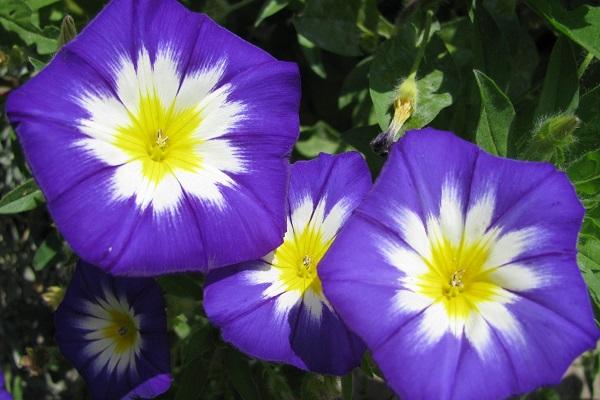
Blue Star
An annual climbing plant. It has strong stems, 2.5-3 meters high. Flowers are funnel-shaped, blue, with blue stripes inside. Flowers open in the morning, at night and in cloudy weather, the flowers close.
Variegata
Curly liana with variegated leaves and purple or lilac-white flowers. The leaves are three-lobed, greenish-white. The stem reaches 1.5-2.5 meters in length.
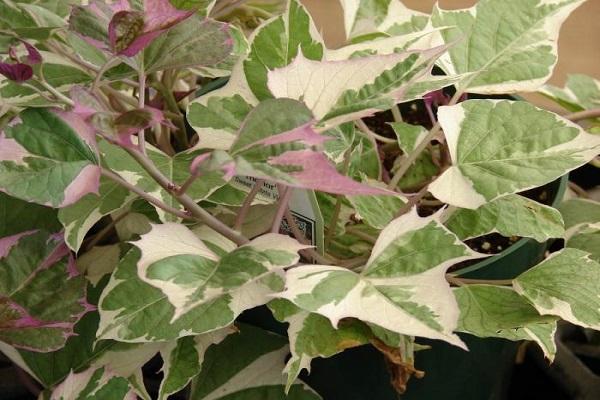
Growing
Ipomoea is a thermophilic plant with a long term vegetation. It is planted with the help of preliminary germination of seedlings or by sowing seeds directly on an open bed. Some varieties can be propagated by cuttings. The choice of planting depends on the type of morning glory and the climatic characteristics of the region.
For seedlings
Fast-growing small-flowered annuals (Purple) can be sown directly into the ground. They will have time to bloom by mid-summer. Large-flowered species (Nile) - are characterized by slow growth. They bloom later, so it is better to pre-sow such varieties for seedlings. Sowing plants directly on open ground is practiced only in warm climatic zones. In a temperate continental climate, it is desirable to grow morning glory by seedlings.
When to plant
At the end of April, Ipomoea seeds are sown for seedlings. This culture has a pivotal root system that does not like transplanting. It is advisable to sow seeds in separate peat cups.
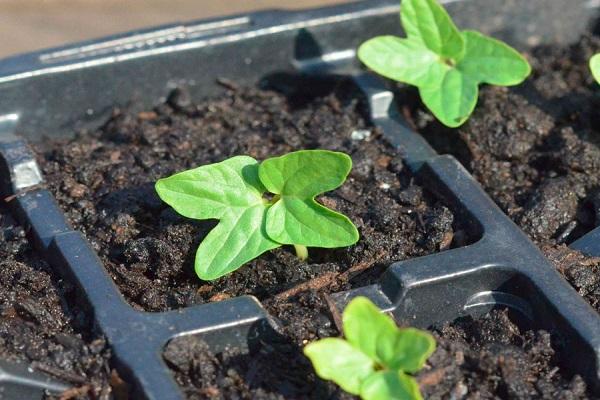
Seed preparation
Before sowing morning glory seeds, it is advisable to soak for 23 hours in warm water. If the seed coat is not wrinkled, it is slightly pierced with a needle (scarified). Then the seeds are again soaked in warm water.
Soil selection
For planting, they take a purchased fertilized soil mixture (for succulent crops) or prepare the land on their own. They mix garden, leafy soil with peat and sand, add a little superphosphate, ammonium nitrate, potassium sulfate and wood ash (5 grams per 1 liter of irrigation liquid).
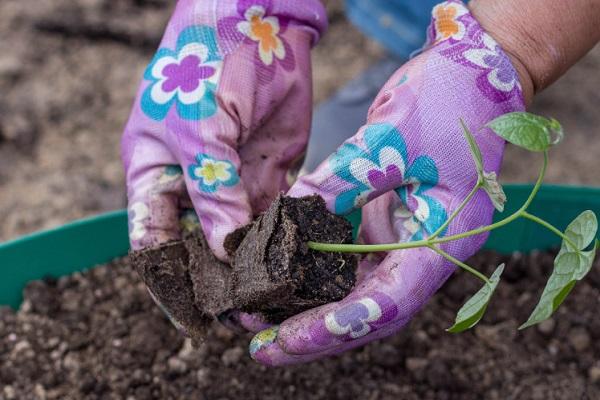
How to plant
2-3 seeds are placed in each peat tablet to a depth of 1-2 centimeters. They are put on germination in a warm place (18 degrees Celsius), covered with a film on top. Seedlings appear in 8-14 days. During development, seedlings need to be regularly looked after: irrigate the land, organize ten-hour daylight. When the seedlings grow up to 16 centimeters, they need to be tied to a support (peg) so that they stretch up.
Rules for planting seedlings in open ground
The grown young seedlings are planted in a permanent place by the end of May. By this time, the soil should have warmed up to 10 degrees Celsius, and the weather should be warm, fifteen degrees outside. For morning glory, choose a well-lit and calm place. The plant is transplanted by the transfer method. Ipomoea with an earthen lump or in a peat tablet is buried in a specially dug hole. The land for planting is pre-fertilized with organic matter and superphosphate.
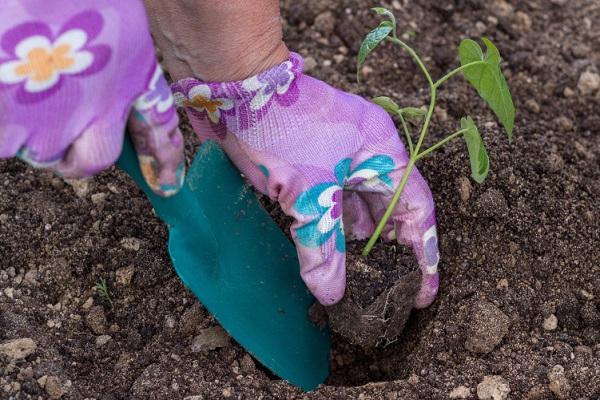
Cuttings
Ipomoea is propagated by cuttings. To do this, cut off shoots 16-22 centimeters long. Each should have 2 unblown buds. The bottom cut is made at an angle of 45 degrees. Stems without leaves are placed in water and wait for the roots to appear. With the appearance of roots, cuttings are transplanted into fertilized, slightly acidic, loose soil.
How to care
The transplanted seedlings are tied to a support or trellis and guided. Morning glory should grow in a certain direction: upward or twine around an arc. At the time of growth, it is constantly looked after: watered, fertilized. When the morning glory reaches the desired height, pinch the top of the main shoot. After this procedure, side shoots grow more actively.
Watering
Immediately after planting, morning glory is watered abundantly. It is necessary to ensure that the earth does not dry out, and the plant does not suffer from a lack of moisture. In hot weather, morning glory is watered 2-3 times a week. 5-10 liters of water are poured under the bush. It is important to ensure that the soil does not become waterlogged and waterlogged, otherwise the morning glory will start to rot.
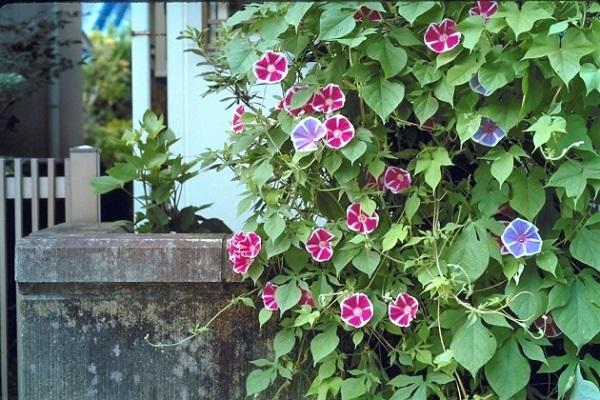
Weeding and loosening
The soil near the morning glory should be regularly loosened. Remove soil crust. Let the roots breathe. It is advisable to remove weeds so that they do not take away nutrients.
Top dressing
Ipomoea is fed once every 15-20 days. For feeding, complex fertilizers are taken (for example, for cacti or decorative indoor flowers). The plant in the process of growth should receive a sufficient amount of nitrogen, potassium and phosphorus. Three times a season, 20-35 grams of complex fertilizer diluted in water (5 liters) are introduced into the soil.
Pruning
In the process of development, the shoots of the morning glory must be formed, directed, cut off excess or broken branches, and pinched the top in time. Before winter, the stems of thermophilic annuals are completely cut off.
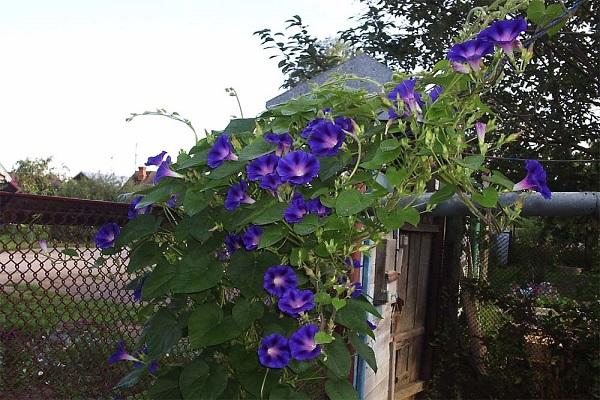
Pest control
Ipomoea is attacked by insects. The main enemies of this plant are aphids and spider mites. If Ipomoea is not protected from these insects, it may die.
Spider mite
These are tiny red insects that settle on the back of the leaf. They weave nets on the plant. They feed on leaf juice. May cause wilting and stunted growth of morning glory. They use insecticides (Aktofit, Fitoverm) and spraying with cold water or garlic infusion.
Aphid
A tiny soft-bodied light green insect. It settles on leaves in colonies and feeds on plant sap. May cause yellowing and wilting of foliage. Spraying with soap, garlic solution or insecticides (Iskra, Aktara, Biotlin) is saved from aphids.
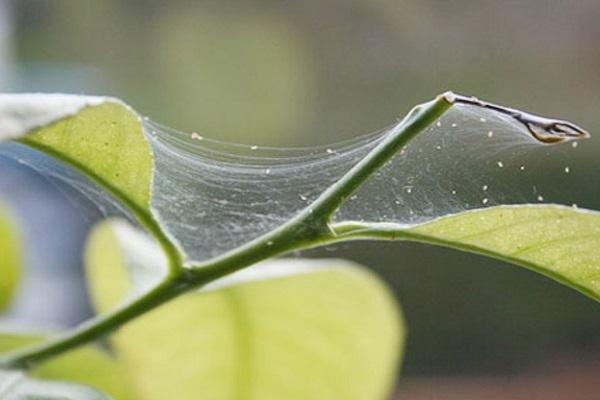
Features of care in winter
The stems of the annual morning glory are completely cut off before winter, the earth is dug up, and the roots are removed from the soil. The next year, seeds are sown, from which new annuals grow.
Propagation by cuttings
Ipomoea can be propagated by cuttings. To do this, you need to cut off the top branches and put them in the water. Each should have several unblown buds. The lower leaves are removed. The branches are cut at an angle of 45 degrees. When the roots appear (usually on the 5-6th day), the plants are transplanted into the ground.
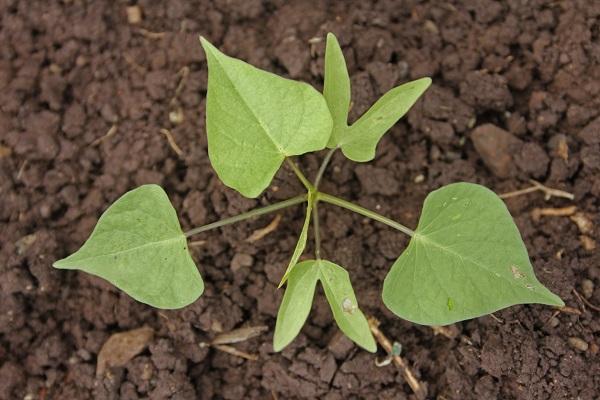
Diseases and treatment
Morning glory can get sick in cool and rainy weather. The leaves on the plant may turn yellow or dry out. Rare or frequent watering, lack of nutrients in the soil can provoke the disease. Morning glory will not hurt if care is properly organized, and for preventive purposes, a sufficient amount of mineral supplements is introduced into the ground.
Fungal
Morning glory can get sick with anthracnose, white rust, various rot. The infection comes from the soil. Ipomoea will not get sick if it is treated with a fungicide (Fitosporin, Topaz), and a sufficient amount of mineral additives is added to the ground.
White edema
It is a non-communicable disease that most commonly affects greenhouse crops. Develops with frequent watering and low temperatures. Greenish or yellow-brown bumps and blisters appear on the leaves. Soon the leaves turn yellow and fly around.Morning glory will not hurt if you organize proper care and watering. To increase disease resistance, the culture is regularly (2-3 times per season) fertilized with phosphorus and potassium.
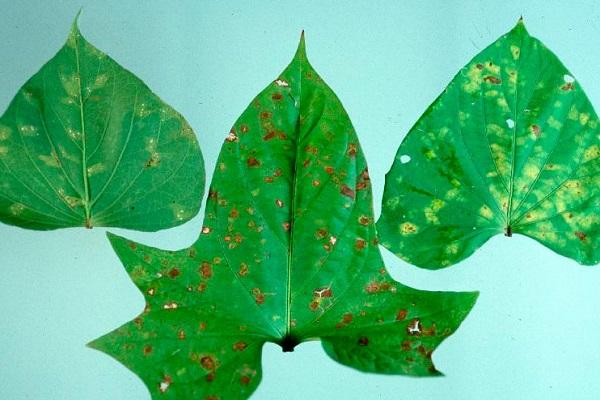
Collection and storage of seeds
Ipomoea seeds are harvested in autumn (October). After the flower fades, a box with seeds appears. For several (four) weeks, it ripens. The capsule is cut off when it turns brown and opens slightly. The seeds are poured and dried. The seeds are stored in a paper bag for 3-4 years.
Combination with other plants
Ipomoea is used for vertical gardening of the garden area. It goes well with nasturtium, climbing rose, clematis. There should be a distance of 1 meter to the neighboring plant.
Use in landscape design
With the help of morning glory, you can decorate a site near the house, a balcony, a gazebo. The flexible vines of this culture can take any shape. They will perfectly braid an arch or a fence. Lush green carpet and bright colors can be used to cover unsightly areas on the facade of buildings. Morning glory looks spectacular in hanging pots.
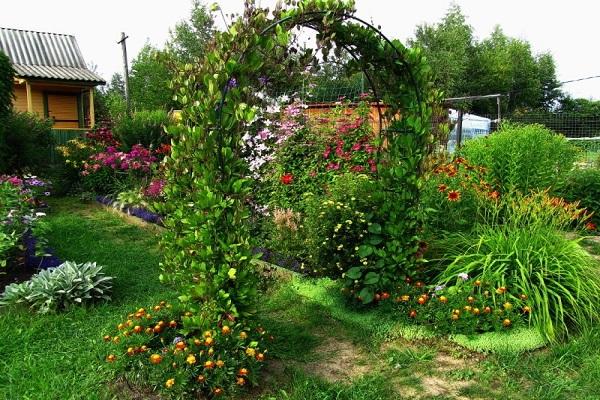
Answers on questions
Question: is it possible to save stalks with roots dug out in autumn until spring?
Answer: it will not be possible to save the roots with shoots dug out of the ground until next summer. They will rot. It is advisable to sow seeds for seedlings every spring and grow new plants.
